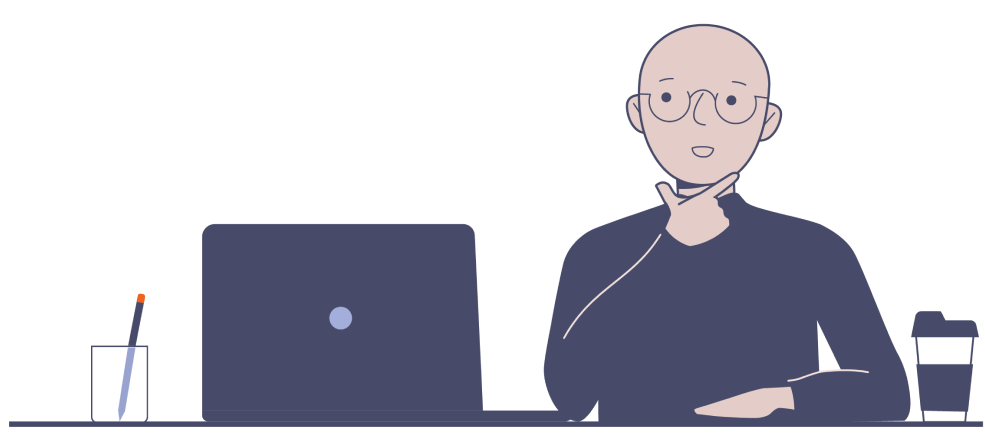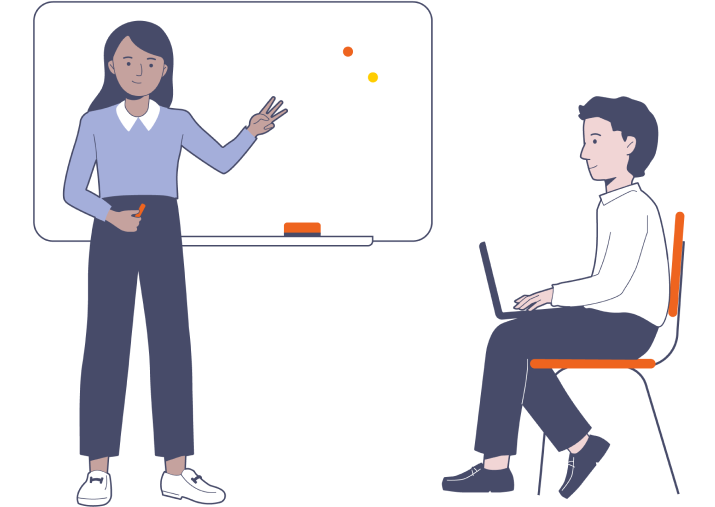
Case Study: Developing TA Practice with Instructional Coaching: Part 1
Resources|29th November 2023

Coaching Lead - MCPA

Director of Implementation — Steplab
Teaching Assistants (TAs) do not always have access to the same high quality professional development (PD) as teachers. TAs support learners with the most complex needs, and therefore ongoing training is key to their effectiveness.
According to the EEF, having support from a highly effective TA can add three-four months’ progress for students (EEF, 2015). It's worth investing in developing TA expertise.
We know that done right, Instructional Coaching has one of the strongest evidence bases (Sims, 2018) with the potential to be the most impactful form of PD we can use in schools (Kraft et al., 2018). So, in September, we released a library of TA-specific content. Our evidence-informed teaching assistant action steps provide TAs with granular next steps, which are bespoke to their complex role. The accompanying Insight Modules also support TAs and their coaches to explore the theory underpinning these steps.
Most schools who contact us to enquire about launching TA coaching have already set up coaching for their teachers, and having seen the impact this is having on their teachers’ development, are looking to broaden access and involve TAs too. At Manchester Communication Primary Academy, they did things differently: they started with their teaching assistants and involved teachers later.
So if you’re wondering how to launch coaching with your TAs, who better to hear from than Elliot, a coaching lead whose school made PD for TAs their top priority?
In this two part blog series, Elliot shares his 5 lessons learnt:
Part 1
- 1.Build a positive culture first
- 2.Reduce cognitive load and simplify feedback
- 1.Normalise modelling and rehearsal
- 2.Build a shared language and mental models
- 3.Respond to data and link coaching to PD
Elliot
The context
The role of the teaching assistant (TAs) has evolved over the last 10 years. The EEF report ‘Making the best use of Teaching Assistants’ (EEF, 2015) highlighted that, despite there being more TAs than teachers in UK schools (273,200 teaching assistants vs 248,900 teachers), TAs can often have little impact in our classrooms. The EEF explains that TAs need training to move beyond supporting children with task completion, and instead towards developing children’s knowledge, skills and autonomy.
To achieve this, we focused on two key questions:
- 1.How are the teaching assistants in our school maximising their impact in the classroom?
- 2.How are we creating the conditions for our teaching assistants to have this impact?
In response, we began the process of implementing an instructional coaching programme for TAs that would maximise their impact and improve outcomes for our students.
We needed to invest in our Instructional Coaching programme to ensure it wasn’t another educational fad that lasted six months before moving onto the next. As such, my whole weekly timetable is dedicated to coaching; consisting of lesson drop ins and subsequent feedback sessions and quality assurance to support teaching and learning priorities in our school.
Alongside this investment, I needed a strong understanding of the science of teacher and TA learning and the mechanisms that support this. I completed the Ambition Institute Instructional Coaching course, visited Steplab coaching hubs and spoke to experienced coaches. I grappled with the many different ways to structure a coaching session, and used Steplab to hone my approach.
A year on, all of our teaching assistants are coached on Steplab, and we’ve seen a huge improvement in their knowledge and classroom practice as a result. The most powerful outcome of all is the eagerness to improve and motivation to get better - our TAs are dedicated to mastering their craft and improving outcomes for students.
There are five lessons I learned as part of this process. The first two I will explore in Part 1 and the second three in Part 2.
Lesson 1: Build a positive culture first
The challenge
Previously, performance development for TAs followed a traditional system: 3 observations over the year, 3 broad targets and little support or guidance on how to implement changes to improve practice. TAs weren’t used to receiving regular feedback, and there was nervousness around observations. Quite naturally, when I introduced the concept of more frequent observations and feedback, TAs were sceptical.
My approach
Creating a positive culture for instructional coaching was key. I was new to post and it was vital to build an instant rapport. I had to make it clear that this newly created role, supporting TAs in getting better, was a collaborative process - we would walk the journey together.
I needed to provide openness and transparency on the purpose of Instructional Coaching. I continuously emphasised that coaching is a form of professional development; it’s non-judgemental and is a mechanism for building expertise. Taking the fear away from the frequency of lesson drop ins was key to gaining buy-in for coaching. To combat this fear, I ensured feedback sessions were warm, focused and built relationships quickly.
My out-of-class role meant I could drop into classrooms, and get alongside TAs in their lessons. Making the best use of time was also crucial. For TAs to trust the process, I scheduled feedback sessions at a time that worked best for them and always during contracted hours:
- 1.from 8:00-8:30am, prior to children arriving
- 2.at a specific time that TAs could be released from class
- 3.after school once the children had gone home.
During feedback sessions, I learned that changing my language to create an instant sense of positivity was key. Following the structure on Steplab and introducing each session with “It was effective when you…” built motivation instantly. I also used shout outs to publicly celebrate great practice and progress made in the classroom.
I also had to stay on top of the latest research on effective TA practice and highlight my credibility, experience and understanding of the TA role. Alongside this, I also had to show my vulnerability; I didn’t always have the answers and sometimes we would work to find them out together. After the first few sessions with staff I took feedback from TAs and there was a genuine sense of enjoyment in taking part in such a powerful process. Observations and coaching sessions were becoming embedded in our school culture and TAs enjoyed the chance to regularly explore their actions in the classroom and reflect on the impact on children’s learning.
Key takeaways
- 1.Give a trained coach time on their timetable to regularly observe and feedback to TAs
- 2.Timetable coaching for TAs within the working day. Ensure instructional coaching forms part of their working week
- 3.Be open and transparent about the purpose of Instructional Coaching and regular observations
- 4.Emphasise the positives and highlight progress at the start of the feedback session
- 5.Build buy-in gradually by taking feedback from TAs on their experience
How Steplab can help
- 1.Follow the structured Steplab approach to feedback, which prioritises praise first
- 2.Use shoutouts to publicly celebrate great practice and progress made in coaching
Lesson 2: Reduce cognitive load and simplify feedback
The challenge
The TA role is complex and it’s tempting to give feedback on lots of areas at once - commenting on the use of proximity, giving clear instructions, responding to classroom behaviour, all in one session. This creates a scattergun approach to feedback that is overloading and demotivating. TAs are often not used to receiving regular feedback on their practice so this can be particularly overwhelming.
My approach
At the start of my coaching journey I was looking at too many aspects of the lesson. I would skip through too many action steps which bounced from one area of teaching to the next, with very little direct link or sequencing. At the time, it seemed like our teaching assistants were really honing their skills and learning lots of new things. However, in the long-term, classroom habits that we wanted to change were still apparent, and that is because I was too quick to speed through the coaching process and move on to a new goal or step.
I had to make a change. I had to ensure TAs were really learning something rather than just performing a change in their practice in one lesson. Changes to their practice needed to stick, so I altered my technique and realised I needed to slow it down, and start working on one goal for a longer period of time.
Managing cognitive load has been the most crucial element to get right. Ambition Institutes’s coaching programme built my expertise and knowledge on how to successfully ‘zoom in’ to a specific element of the lesson. I learnt to filter what’s going on in the classroom to help focus on the highest leverage aspect of TA practice to work on. I use the notes section on the Steplab feedback form to gather factual evidence and make detailed notes on TA and student words and actions during a lesson before proposing a singular goal to work on for a number of weeks. Gathering this kind of evidence also supported me to write probing questions, such as “I noticed that this learner looked distressed at the start of the independent practice task. Tell me about that.” This developed our TAs’ situational awareness - their ability to notice the right things in lessons, and diagnose where and how to support learning.
Completing Steplab’s Coaching Skills Builder course taught me to gather evidence on what was happening in the classroom and diagnose common learning problems. Completing this training helped me to become a far better coach and in turn, have a far greater impact on the TAs I was coaching and the students they worked with. I learnt how to reduce cognitive load by focusing on one high leverage area of TA practice at a time.
When creating or selecting an action step I ask myself three questions:
- 1.When - When in the lesson is most appropriate for it to happen and which existing routines can we build upon?
- 2.What - What is it the TA needs to do? What does success look like?
- 3.Why - Why are they doing this and how does it solve the learning problem?
Working with Zara
When working with Zara, I was able to identify that focusing attention at the start of the lesson was a learning problem, and that our goal should be ensuring children entered the classroom quickly and calmly.
During the feedback conversation, referring to specific lesson evidence and particular children’s actions developed Zara’s situation awareness; she could spot learning problems faster. This also helped us to agree on our overall goal, and the action steps.
Before Steplab, writing granular action steps was a difficult task. However, I used the step sequences on Steplab, and the methodology of grouping steps by goal, to design our own bespoke steps. This has supported us with building a shared language and shared expectations, whilst also allowing coaching to be personalised and ‘just right’ for each coachee - the ‘goldilocks principle’ in full effect.
Example step from Steplab's specialist TA steps

Once Zara had nailed her threshold greeting, and we’d seen the impact of this, we built upon this routine. Next, we worked on how she could simultaneously monitor the inside and outside of the classroom. Zara commented on how quickly she was able to tighten up entry routines through embedding these actions as a habit. Through narrowing our focus and working towards the same goal for a few weeks, we saw rapid improvements in children’s entry to the classroom. Building on the success of one step by simply adding a new component to this routine supported Zara to begin to automate these steps.
Insight modules have also been key as they’ve given TAs further study. For example, we can select a step around routines, and the TA can independently complete further study. This gives staff deeper knowledge and ownership of the step they were focusing on.
Key takeaways
- 1.To help build situational awareness, make specific and factual notes: what does the TA say/ do? What do students say/ do?
- 2.Reflect upon the lesson evidence, consider the learning problems the TA is facing and agree upon a specific goal to work on for a number of weeks
How Steplab can help
- 1.
- 2.Use the notes section on the observation proforma to record detailed notes, gather factual evidence to support the coachee’s situational awareness
- 3.
- 4.Use Steplab’s Core and TA Steps to build your own sequence of steps
- 5.Customise the step and success criteria to make it work for your coachee in their context
- 6.Agree and assign an insight module related to the goal to deepen the coachee’s knowledge of the ‘how’ and ‘why’ underpinning the goal
In Part 2, we’ll look at how to:
- 1.Normalise modelling and rehearsal
- 2.Build a shared language and mental models
- 3.Respond to data and link coaching to PD
Want to know more?
Get in touch or email us at [email protected]
References
Kraft, M. A., Blazar, D., & Hogan, D. (2018). The effect of teacher coaching on instruction and achievement: A meta-analysis of the causal evidence
Sharples, J., Webster, R., & Blatchford, P. (2015). EEF guidance report: making best use of teaching assistants.


